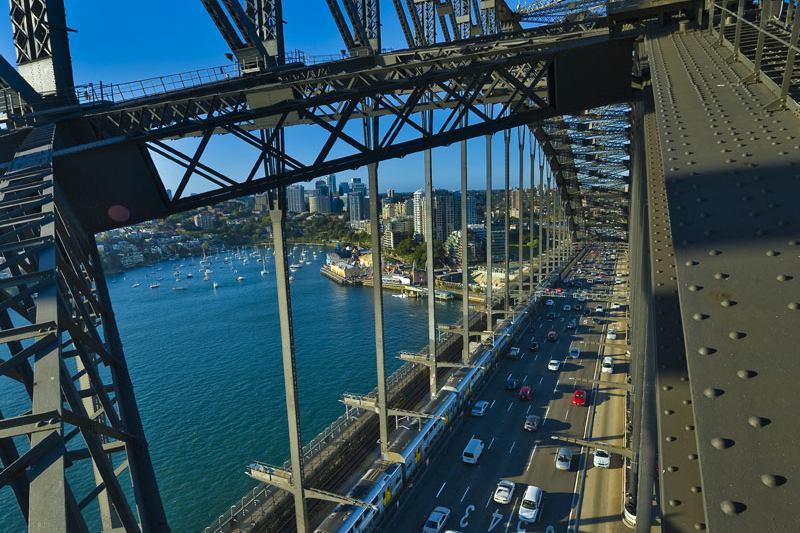Strong foundations: Asian infrastructure is open for business
Despite the pandemic, optimism for Asia-Pacific infrastructure projects is increasing with investors looking at a plurality of regions and sectors

While some projects have been delayed, the sector has proven itself remarkably resilient. As has occurred with previous crises, there is now a growing expectation that infrastructure financing volumes will increase above and beyond historical values as the effects of the pandemic subside. And private investment is vital, considering the region’s infrastructure needs— demanding US$1.7 trillion annually in financing, according to the Asian Development Bank (ADB).
With this in mind, White & Case, in association with Inframation, set out to investigate the prospects for infrastructure investment across the APAC region. This new survey builds on our 2019 report Cutting Through the Noise.
The research reveals that, Black Swan events aside, investors remain extremely bullish over the long-term fundamentals of the Asia-Pacific infrastructure sector, with four clear trends emerging:
New frontiers
Investors see APAC as a land of opportunity. More than half of respondents cited ‘wealth of opportunity’ as the greatest benefit to investing in the region.
Growth plans
Despite concerns regarding aspects such as construction and delivery risk and political scrutiny, the outlook from respondents is overwhelmingly positive—78 per cent of firms intend to grow their teams in the region in 2021.
Social surges
Mirroring the findings from our previous report, roads are once again seen as the key infrastructure sector destination. The most eye-catching trend is the significantly increased focus on social infrastructure, with 58 per cent of firms intending to invest.
Responsibility reigns
An increasing need for sustainable infrastructure management caused 60 per cent of respondents to cite environmental, social and governance (ESG) considerations as ‘very important’ when looking at their investment in the region.
Despite the pandemic, optimism for Asia-Pacific infrastructure projects is increasing with investors looking at a plurality of regions and sectors

Digitalisation and ESG are transforming the face of infrastructure. Here we explore how investors are reacting to the opportunities and challenges these forces present

The future is bright for the asset class in the region. Here we explore investor' vision for the future


Digitalisation and ESG are transforming the face of infrastructure. Here we explore how investors are reacting to the opportunities and challenges these forces present.
World in Transition
Our views on changing dynamics in energy, ESG, finance, globalization and US policy.
Technology is playing a transformative role in infrastructure development in 2021. Innovations such as machine learning, robotics and artificial intelligence (AI) are becoming increasingly vital and are likely to significantly alter the way infrastructure development occurs in the future.
"There will be more projects in the Asia-Pacific region aiming at digital connectivity," said the director of investment at one Australian investment fund. "5G and smart city projects seem more attractive to new-generation investors and they are keen on investing in technology-integrated development."
5G and smart city projects seem more attractive to new generation investors and they are keen on investing in technology integrated development
Evolving demographics in Asia are creating significant opportunities for investors. According to projections by the United Nations, Asia is one of the fastest-urbanising regions in the world and will have a 64 per cent urbanised population by 2050. Such expansion places enormous strain on existing infrastructure, and so many investors are targeting tech as a sustainable and profitable solution to accommodate such explosive growth.
An example of how technology is improving efficiency and changing the way infrastructure is being built in Asia can be seen with the construction of the Putrajaya Line (PY Line) in Malaysia. Previously known as the MRT Sungai Buloh-Serdang-Putrajaya Line, the PY Line is the second rail line under
Malaysia's Klang Valley Mass Rapid Transit (KVMRT) Project and the first metro project in Asia-Pacific to adopt a Building Information Modelling (BIM) Level 2 strategy. This enables improvements in design collaboration, construction feasibility and accuracy of as-built information, resulting in greater operational predictability and efficiency gains over the first KVMRT project.
45%
engage in a partnership or joint venture with other entities in order to deliver transformation to infrastructure projects
The infrastructure sector in Asia is ripe for disruption, with various applications and commercialisation methods able to improve value, efficiency, productivity, inclusion and governance. Digitalisation can also deliver sustainable outcomes. For example, digital optimisation of city transport and waste collection can minimise energy consumption and wasted time, while the digitalisation of energy grids can reduce wasted energy as well as facilitate the inclusion of renewables.
The managing director of one Canadian pension fund said: "Artificial intelligence and automation will be integrated into various infrastructure systems, such as energy and water management, to ensure optimum supply and record any capacity issues."
However, challenges still exist. Some of the barriers to integrating technology into infrastructure include limited market access, lack of incentives and the conservative nature of the infrastructure ecosystem.
In order to overcome such barriers and deliver technological transformation to infrastructure projects, 45 per cent of respondents said they favoured partnering or forming a joint venture with a tech provider.
"Short-term partnerships will be arranged to complete tasks swiftly," said the managing director of one Indonesian financial institution. "When it comes to technology, there will be different providers with varying degrees of expertise, so we will have a good choice for partnerships."
Twenty-eight per cent of respondents found that subcontracting to a tech provider was the most effective solution as it saved investment in a technology network infrastructure while simultaneously allowing access to a better pool of talent. "It provides more opportunities for faster development because of their expertise in the sector," said the head of infrastructure investments at one Singaporean investment fund.
As more projects use digital and integrated technologies, data security and privacy issues could emerge. Avoiding these effectively with proper cybersecurity solutions will be essential.
Even the most conscientious company can make a false step as it captures, uses, transfers and discloses personal information. The same applies to cybersecurity, which is becoming increasingly complex. The consequences can be serious: heavy fine; injunctions; government audits; even criminal liability. Perhaps more importantly, companies that run counter to privacy and cybersecurity standards find themselves open to negative media attention and the immeasurable damage of lost consumer trust.
Alongside digitalisation, ESG issues are changing the face of infrastructure investment. ESG disclosures represent a different way of gauging the performance of an organisation beyond its balance sheet, focusing instead on its impact on society in general.
And when asked about key considerations for future-proofing their projects, investors reveal that an increased focus on sustainability and the green credentials of projects was the most important.
"We have a dedicated team working on evaluating the environmental impact of projects," said the director of strategic development at one UK sponsor.
"There are innovative ways in which projects can reduce their carbon footprint. Some construction projects ignore these features, and we are careful about avoiding such projects that damage the environment."
Our survey shows that there is a renewed focus on the importance of strong corporate governance and sustainable and diverse supply chains, as well as on the need to finally address the climate crisis.
"Sustainable development will be the key theme," said the head of strategy at one Japanese sponsor.
"Environmental principles are being closely monitored by investors, and authorities in many regions are giving more importance to environmental regulations."
Other key issues around ESG concern reputational risk which can be mitigated by increased transparency and stronger reporting. As the director of investment at one Canadian pension fund said:
"Business ethics and transparency are also important for determining the value of a project in the long term."
In line with this need for greater transparency, ESG-specific reporting is becoming fundamental for managers. Indeed, a 2020 survey by Russell Investment of 400 global asset managers found that 49% claimed to offer this type of reporting to clients. The pandemic and climate change concerns among investors can only grow this number.
Large institutional investors are increasingly aware of pressure to ensure that investments are made in accordance with sustainable principles, and this is as much to do with future-proofing reputations as it is returns. Almost three quarters (74 per cent) cited ESG considerations as being important when contemplating investing in an Asia-Pacific infrastructure project.
Awareness in the region of the power of sustainable finance has been slow to develop and lags behind EMEA and the Americas. This is partly due to the short-term view historically taken by many Asian investors who have understandably been preoccupied with rapid economic development. However, the need for change has become increasingly apparent, with growing levels of pollution and social inequality in the region.
Although the pandemic has reinforced the need to consider the social impact of a project and enhance internal governance processes, ESG principles were becoming better understood in Asia even before COVID-19. In Japan, for example, leading financial services group MUFG Bank announced in 2019 that it would reverse its policy of investing in coal-fired power generation projects.
74%
believe ESG considerations are important when contemplating investing in an Asia-Pacific infrastructure project
Fifty-five per cent of respondents to our survey cited energy efficiency as the most important consideration when thinking about the environmental impact of their investments. "Greenhouse gas emissions and energy efficiency are most important for infrastructure projects," said the senior director of investment at one Saudi Arabian pension fund. "Setting benchmark standards is important as well as putting an emphasis on green development plans."
Controlling deforestation levels was cited as a main environmental objective by some investors. "We will ascertain that there are no biodiversity issues when contemplating an investment," said the director of finance at a Chinese investment bank. "If the construction process affects marine or wildlife, we will provide suggestions and alternatives."
Forty per cent of respondents confirmed that labour standards were the most important consideration when thinking about the social impact of their investments. "I would say human rights, community relations and labour standards are very important for nurturing talent and avoiding social conflicts where projects are being conducted," said the head of energy in the infrastructure division of one UAE sovereign wealth fund.
While working closely to identify the interests of indigenous stakeholders was only mentioned by 18 per cent of firms—making it the fifth most important social consideration—the director of investment at one Canadian pension fund said it helped his firm understand their perspective. "They can share very useful insights about various aspects of projects based on their knowledge and expertise."
Investors have realised the higher value there is to gain from renewable energy generation practices. The use of battery and hydrogen storage will form a major part of renewables projects
More than half (51 per cent) of respondents said that political influence was the most important governance consideration when contemplating an investment.
Regulators can play a hugely important role in helping to support sustainable investing and, in this regard, Asia has been something of a pioneer. Hong Kong's Securities and Futures Commission (SFC) has made it compulsory for listed companies to disclose all of their sustainability credentials while mainland China now requires all listed companies to report their ESG risks.
16%
intend to invest in hydrogen as a non-carbon transportation fuel
Supply chain management was cited by 36 per cent of firms as the next most important governance consideration when contemplating an investment. Supply chains have become understandably unstable during the pandemic, while many large global manufacturers previously diversified some of their supply chains out of China to cheaper countries in the region (South Korean conglomerate Samsung shifted its mobile phone manufacturing to Vietnam).
With rising regulatory pressure, emerging focus on reputational risk and increasingly complex supply chains, respondents said it was now vital that organisations take third-party risk management seriously.
ESG and technology will be central to the success of all infrastructure projects in the coming years. Here we explore how investors and project leaders can meet their environmental requirements through the use of renewables and hydrogen
The future of renewables
Renewable energy trends are catching on in Asia-Pacific and are increasingly supported by governments in the region. It is hoped that renewable energy zones and the adoption of solar energy practices will open up new opportunities for investors in the future.
Sixty-four per cent of respondents agree that the financial closure of a significant number of renewable energy projects in Asia-Pacific in 2021 will have a positive influence on other infrastructure investments across the region.
"Renewable energy projects will increase because countries have set targets to be met within the next few years to reduce their carbon emissions," said the head of corporate development at one US sponsor. "Since announcements have been made, they will have to think about the means to fulfil these targets."
Nearly three-quarters agree that the generally lower capital cost of renewable energy projects compared to social and transport infrastructure makes them a relatively more attractive asset class in emerging Asian economies.
"Renewables trends will catch on as more investors are focused on adopting strong ESG principles," said the senior director of investment at one Saudi Arabian fund. "There is more clarity now about the effectiveness and revenue generation capabilities of these projects."
Meanwhile, a pointer to where the market is headed can be seen by how quickly the oil majors are looking to make the transition into renewable and low-carbon projects. For example, in October last year, Shell announced it would increase its spending on low-carbon energy to 25 per cent expenditure by 2025; around the same time, its rival BP vowed to grow its investment in low-carbon energy tenfold to US$5 billion per year by 2030.
Hydrogen: The wave of the future
Given the potential to reduce the cost of energy generation and usage in Asia, 16 per cent of respondents intend to invest in hydrogen as a non-carbon transportation fuel. For a region that is still largely dependent on oil imports and is struggling to quit its addiction to coal, hydrogen offers Asian countries a 'clean' alternative and a crucial boost in their transition towards developing sustainable economies.
China and Japan are the two largest net importers of fossil fuels in the region. But the Japanese government has set an ambitious target to have a complete hydrogen society by 2050. This includes reducing the price of hydrogen by 90 per cent, which would make it cheaper than natural gas.
Meanwhile, South Korea unveiled its 'roadmap for a hydrogen economy' in 2019, with a vision to sharply increase production of hydrogen-powered vehicles and electricity generation by hydrogen.
Like Japan, it has made clear its intention to import clean hydrogen from countries that can produce it competitively and reliably. "Investors have realised the higher value there is to gain from renewable energy generation practices," said the director of finance at one Indonesian sponsor. "The use of battery and hydrogen storage will form a major part of renewables projects."
White & Case means the international legal practice comprising White & Case LLP, a New York State registered limited liability partnership, White & Case LLP, a limited liability partnership incorporated under English law and all other affiliated partnerships, companies and entities.
This article is prepared for the general information of interested persons. It is not, and does not attempt to be, comprehensive in nature. Due to the general nature of its content, it should not be regarded as legal advice.
© 2021 White & Case LLP